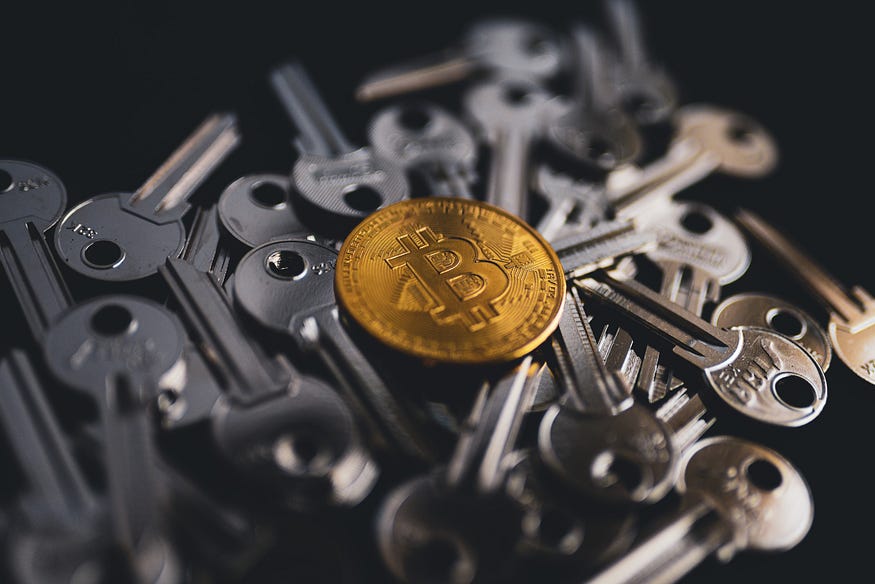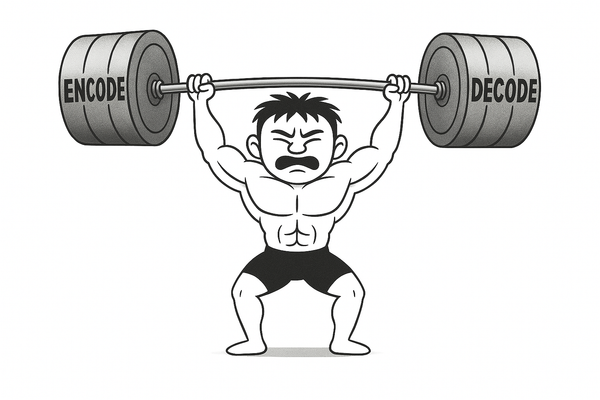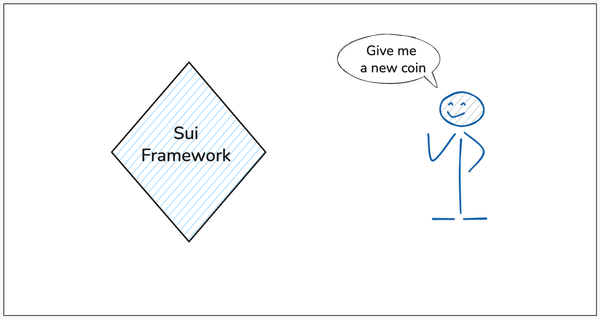Deciphering the ABCs of Blockchains

If you are here out of chaos while trying to understand the web3 and Blockchain, then don’t worry I was going through the same chaos over the internet while I was trying to understand this new famous trendy technology with some fancy terms and some jargon for the non-tech or even tech people. So in this blog, I’ll share the basic understanding I studied of blockchain technology.
This topic is so interesting and vast that you have to keep researching this.
I will only make you aware of why and how blockchain came and what is it.
Well, to start with this, First let’s see the definition that we all must have seen while doing some research on this technology.
Blockchain
So Blockchain Is a Decentralized, distributed, digital ledger of transactions that is duplicated and distributed across all the computer systems on the blockchain(which are called nodes) worldwide instead of being stored in a single centralized organization or server.
What does that even mean?
For this, you must know what is centralized and decentralized, and what was the need for decentralization.
Centralized and Decentralized
As we all are familiar with the banks, the government, and all kinds of organizations that are controlled by a central authority. It simply means that this particular organization is accessing and controlling our data and this is ridiculously simple for anyone to alter or manipulate any of our data because it is being stored in a single place or server.
It is also too easy to hack this single server.
And just like this, the internet is also being centralized by some notable companies. You might be thinking that the internet is decentralized, yes it is, but now most of it is controlled by some of the tech giants.
Now again coming around to the finance thing, as blockchain technology mostly revolves around finance.
At present time the whole finance of a country or world depends on these centralized authorities making it very critical and to be easily tampered with.
You might be aware of the hyperinflation in Venezuela which was the greatest of all the inflations in Argentina, Bolivia, Brazil, Nicaragua, and Peru in the 1980s and 1990s, and that of Zimbabwe in the late-2000s.
Now we all can agree to the same point that this was the failure of the central authority governing the flow of money and the rate of minting the currency.
Something similar happened in the year 2007–08 when the whole world faced the financial crisis, and not only that, also before this crisis something similarly serious happened in the 20th century between 1929–39 which is called “The Great Depression”. These are whole other topics to be discussed and I won’t focus much on these, so I am dropping the link here so you can do some research on it.
The financial crisis of 2007–2008 — Wikipedia
The main reason for talking about these is the rise of blockchain. Why does someone think of such a revolutionary step which is decentralization?
Well In 2009 i.e. the same time when the financial crisis shook the world, an anonymous developer or a group of developers released an eight-page long white paper proposing: ‘A purely peer-to-peer version of electronic cash would allow online payments to be sent directly from one party to another without going through a financial institution.’ Which is known as BITCOIN.

What does it mean? How is this possible?
This is possible because of blockchain. Now the main topic comes here “THE BLOCKCHAIN TECHNOLOGY”.
Now if you think Bitcoin was the invention of Blockchain. No, it wasn’t, Blockchain has been proposed long ago than Bitcoin. Then why Bitcoin is the hype? Because till then Bitcoin was the best implementation of Blockchain so far, and people got to know about blockchain because of Bitcoin.
Blockchain is not something being invented by a single person or a single organization. It was a whole new idea in itself. People continuously experimented and took this idea to a new level.
History of Blockchain
Now the history of Blockchain is Something like this:
1991
A cryptographically secured chain of blocks is described for the first time by Stuart Haber and W Scott Stornetta
1998
Computer scientist Nick Szabo works on ‘bit gold’, a decentralized digital currency.
2000
Stefan Konst publishes his theory of cryptographically secured chains, plus ideas for implementation.
2008
Developer(s) working under the pseudonym Satoshi Nakamoto released a white paper establishing the model for a blockchain.
2009
Satoshi Nakamoto implements the first blockchain as the public ledger for transactions made using bitcoin.
2014
Blockchain technology is separated from the currency and its potential for other financial, and inter-organizational transactions is explored. Blockchain 2.0 was born(Ethereum), referring to applications beyond currency.
As you can see 1991 was the time when the idea of Blockchain was introduced, which is way before Bitcoin.
Now, how Stuart Haber and W Scott Stornetta did all this is a whole story in itself. I’ll focus only on the points which will make you understand the working of blockchain.
You can refer to this Article if you want to know the whole story:
Stornetta was worried about the data-keeping as he witnessed some of the scandals of data manipulation. And he was also aware that the future of data storage is going to be digital so he was worried about the protection of data.
As he was a theoretical physicist so he was not much aware of digital documents and how to secure them. But then he met Haber, a cryptographer and they both agreed to work on the solution to this problem of keeping data safe from manipulation.
They used the existing technologies which were Cryptography, to hash the data, and DLT (Distributed Ledger Technology ) to store the same data in different systems.
The data was then reduced and stored in a form of a hash which was obtained by cryptography and was of few bytes long, then instead of the data, the hash was sent to TIMESTAMP SERVICE to get time-stamped and certified.
So this was the idea of Blockchain. This was not even named Blockchain at that time though. If you want to study this experiment or research you can head over to the above link.
After this, Nick Szabo,1998 tried to build a digital currency named “Bit Gold”, yes similar to bitcoin, and this is also the reason why people doubt that Szabo is Satoshi Nakamoto but he denied it.
Bit gold was similar to bitcoin but there are slight differences between them, which are:
- Szabo said there would be fluctuations in Bit gold mining but never specified whether it will get easier or more difficult. On the other hand, bitcoin mining will get more difficult time over time, and also there is a limited quantity of bitcoin to be minted which is 21 million.
- The second difference is that bit gold was not supposed to be the electronic currency instead it was there to be the reserve, a reserve that can back an electronic currency, something similar to the physical resources to back the money before this era of fiat currency.
Nick Szabo also suggested the idea of smart contracts at that time when it was not in existence. And now smart contracts exist and we will talk about that in a later blog on Ethereum.
After all these experiments and the hard work of the scientists, in 2008–9 Bitcoin was invented.
It was a currency, a decentralized currency where one person can share a bitcoin with another without trusting any middleman and the transaction would be stored in a distributed ledger which is BLOCKCHAIN.
Now let me describe the working and concept of blockchain.
First of all, be crystal clear about the difference between blockchain and Cryptocurrency.
Cryptocurrency is made on top of blockchain technology which means blockchain is not only limited to cryptocurrencies but they have lots of other use cases which we’ll discuss later in this blog.
As suggested by the name Blockchain is a chain of blocks and those blocks contain data in the encrypted form (hash).
Every block in a Blockchain is connected to the previous block by containing the hash of the previous block and this is how it is chained and connected and also makes it secure.
A question that might arise here as I said every Block contains its previous block’s hash, so what about the first Block? What does it contain as the previous block’s hash?
The answer is the first block contains zeros as the previous block’s hash this first block is called the Genesis block and it contains no transactions.
So, what next? How does a new block add to the chain?
The new block is added through mining which is converting the data into the hash and proving or satisfying the needed difficulty. And to make sure that this data is authentic, the block has to be verified by all the nodes through a consensus mechanism which is a set of agreements that has to be fulfilled while adding a block.
There are different consensus algorithms out of which Bitcoin uses PoW (proof of work ). The others are :
Proof of Stake (PoS)
Proof of Burn (PoB)
Proof of Capacity
Proof of Elapsed Time
You can know more about the consensus mechanism on the internet but as of now, this is enough to understand blockchain.
This is how blockchain work.
Now there can be different kinds of data stored in different blockchains. For example, Bitcoin Blockchain will only contain the transaction data while the Ethereum blockchain will contain more than that which is transactions and also the smart contracts deployed on that blockchain.
Now let’s dig a little bit deeper into the structure of a single block. For example, let’s see a bitcoin block
Structure of blocks in a blockchain
Now what comes inside the blocks is interesting. A single block contains a block header i.e. the metadata of that block and the data to be stored(which in the case of bitcoin are the transactions).
The header contains
- Previous Hash
- Difficulty Target
- Timestamp
- Merkle Root
- Nonce
Now what is a hash, it is a long string obtained cryptographically which is 256 bits in size, and changing any small thing in the data will change the hash drastically. This works like a digital sign. And there are different algorithms to produce a hash but cryptocurrencies work on SHA256.
Now let’s see the different components of the block header.
- Previous hash — You should know that in Blockchain every block is connected to the previous block making it a lot more difficult to alter the data. So every block has the previous block’s hash and if you change any of the data in the chain then you have to change the hash of each block.
- Difficulty target — This is a field that is needed to assure the PoW consensus. There are different types of consensus mechanisms, among them, PoW is more famous as it is used in Bitcoin. The miner has to use high computational power and time to get the target. The first miner reaching the target wins and his block is verified, this is the competition among the miners.
- Timestamp — This field tells about the time when the block was created, as this is clear from the name itself.
- Merkle Root — This is the combined hash of all the transactions. The method is known as the Merkle tree where every transaction data is converted into the hash and then their hashes are combined to produce a common hash doing this, again and again, gives us a single hash which is the root hash consuming less space in the block.
- Nonce — This is random which miners used to produce a hash that matches the difficulty. The miners keep adding a random number to the hash which satisfies the Difficulty level. This calculation is done by their high-power computers. And the number which satisfies the difficulty level is stored in the block as the nonce.
Again, these topics are the whole subject in themselves. And I won’t go much deeper into these topics.
There is also a version number in the block to identify which version of the blockchain is being used.
As I already said this technology is a whole subject. And I will only give you the basic understanding
Now you understood what goes inside the block and how a miner performs calculations to add that block into the chain.
Security of Blockchain
You also have an idea about how blockchain is secured from data manipulation. As every Block is connected to the previous block, if anyone alters any data then they have to change the hash of every following block, which will require a lot of time and effort. Even if they manage to do so the challenge is not over yet. After using a lot of computational power and spending a lot of time let’s say they changed the hash of every single following block. As the blockchain is stored in every computer on the network other nodes will identify that chain as altered and won’t add any block to that means that the chain is of no use because everyone has an authentic copy of the blockchain. To overcome this problem that person would need to gain the 51% trust of the network which is you know near to impossible.
This is how Blockchain is secured even after the public has all the control.
Now Let’s Talk about the types of blockchains.
Types of Blockchain
Primarily we can say there are two types of blockchain which are Public blockchain and Private Blockchain, but there are two more variations which are Consortium Blockchain and Hybrid Blockchain.
I won’t step into the Consortium and Hybrid rather we will learn about the Public and Private blockchains as these are widely used and more popular.
Private Blockchain
This might be strange but private blockchains are centralized. As they are permissioned and controlled by a single authority. No permission is given to any random person to access the blockchain. Only the authorized nodes can access and perform mining making it faster than the public blockchain as there is less traffic in the network because of less number of nodes.
Hyperledger from the Linux Foundation is one of the famous private blockchains.
Public Blockchain
Public Blockchains are Permissionless blockchains which mean anyone can join the network and perform the maintenance of the network and earn rewards. No single authority can control the network. The whole blockchain network runs on a consensus protocol and anyone can just participate in it. At present Bitcoin is the largest public blockchain. Ethereum is another very popular and large public Blockchain.
Some key points for public and private blockchain
- Both the blockchains are appending only ledgers i.e. data can only be added to the network and cannot be altered afterward.
- Both Blockchains depend on numerous users to make some edits to the network.
- Every participant in the network has a complete replica of the ledger in both blockchains.
- Private blockchains are more scalable than public Blockchains.
- Public Blockchain uses more energy than private blockchain.
At last, you have complete knowledge of Blockchain and might be thinking of its use cases as I said earlier, there are use cases other than cryptocurrencies.
Use cases of blockchain
- International payments -International payments are less expensive with the implementation of blockchain as it reduces the number of intermediaries and also makes the process more efficient.
- Supply Chain — The supply chain includes all the activities carried out by the company or organizations to provide any product to the consumer. It consists of all the processes of making the product then shipping the product and finally reaching the consumer. In modern days the supply chain mechanism is not sufficient and compatible. This is quite slow and error-prone. So Blockchain can be implemented in this process which will fasten the process also blockchain is immutable and transparent there is no threat of data manipulation.
- Healthcare sector — Blockchain can be used in the healthcare sector with such a huge significance. As it can store the patients’ information about their health and different hospitals can also share the information for better treatment. Also, the data will be secured and immutable. Estonia is the first-ever country to fully implement blockchain technology in the healthcare sector. Some companies are doing great in this field like Chronicled, Medical chain, Block Pharma, and many more
- Public Identity records -As Identity theft is alarming nowadays and this is becoming a problem for all of us. Blockchain can be the solution to this problem by storing all the public data, like their identity, Health information, Birth certificate, death certificate, marital status, business license, criminal activities, and many more things. This will keep the data more secure than before, as there will be a network of people verifying these data and every change would require permission from the network
- Voting system — At present time voting is done by the means of electronic machines which are vulnerable to any kind of threat, attack, and breakdown. With blockchain, we can secure this voting data as it will be distributed among the network and can’t be changed or tampered with.
This is not all.
There are a lot more use cases of blockchain. People are still exploring and innovating new ideas with blockchain, as this technology is a new emerging revolution in the whole world.

Summary:-So Blockchain is a distributed digital ledger of data maintained by a network of people and not any single authority. The data is stored in every single system of the network and not in only one server. Blockchain is a trustless and append-only ledger. The persons maintaining the network will get a reward automatically. And all these processes work on the principle of applied consensus mechanism, which prevents data tampering and makes it secure.
So now you have an idea about what is blockchain? When and why does Blockchain come? How does blockchain work? How is Blockchain secured? And also some use cases of blockchain.
That’s it for my first Blog on Blockchain. Hope it was clear to you :).
Comment down your views on the blockchain. Appreciations and criticisms are wholeheartedly accepted.



![Why Learn Hard Solidity Things [ ABI Encoding Series: Part 0 ]](/content/images/size/w600/2025/06/ChatGPT-Image-Jun-8--2025--07_07_45-PM.png)
